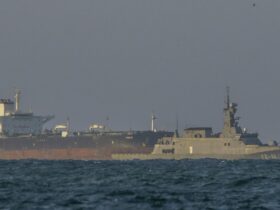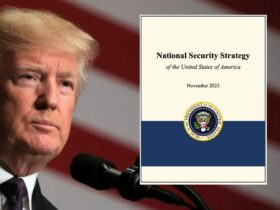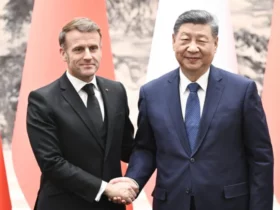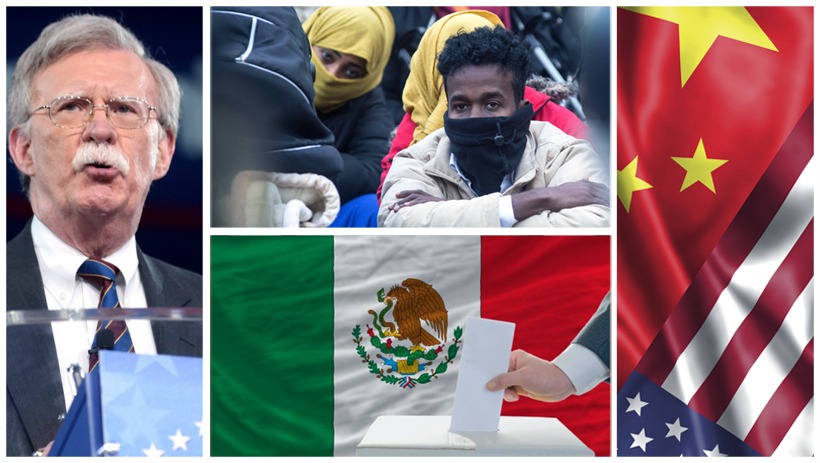How the trade war began in 2018.
How the trade war began in 2018.
By Sergio Rodríguez Gelfenstein
Despite Trump’s pragmatic decision to seek rapprochement with China that would foster ongoing high-level communication and stimulate cooperation, an atmosphere of uncertainty began to surround the relationship between the two countries, given the contradictory signals emanating from Washington. The presidents’ conversation on February 10, 2017, did nothing to calm the winds of conflict blowing eastward. In an article published in Asia Times, researcher Richard A. Bitzinger of Nanyang Technological University in Singapore opined that “there were voices in both countries raising this possibility.”
In the article, Bitzinger recalled that in March 2016, White House chief strategist and Trump advisor Steve Bannon had stated emphatically—when he was not yet in office—that war between Beijing and Washington in the South China Sea was inevitable within 5 to 10 years. But now his point of view took on even greater significance, given that he had assumed a high-level position very close to Trump. In response, on January 20, the day of Trump’s inauguration, the People’s Liberation Army of China stated on its official website that “‘a war within [Trump’s] presidential term or a ‘war that breaks out tonight’ are no longer just slogans but are beginning to become a reality.”
At the same time the presidents were speaking in early February, the U.S. Navy deployed the USS Carl Vinson aircraft carrier strike group and the USS Wayne E. Meyer guided-missile destroyer to the South China Sea to conduct what it called “routine operations.” In addition to the immediate condemnation by the Chinese Foreign Ministry, which characterized these actions as threatening and harmful to the sovereignty and security of the region, the Chinese newspaper Global Times published a strongly worded article stating that China’s stance would be peaceful as long as the United States did not engage in provocative maneuvers in its adjacent seas. Otherwise, China would be forced to deploy all types of weapons and combatants in the area.
The newspaper wondered whether the US Navy’s actions were not a clear expression of an attempt to militarize the South China Sea and whether the US military’s public statements were not a manifestation of a direct military threat. It responded, “The South China Sea is not the Caribbean,” adding that the region was not “a place for the United States to behave recklessly. US generals said they are ready to fight when necessary. The People’s Liberation Army is also making preparations.”
Adding fuel to the fire, the Mexican website ContraLínea published an article on February 2 of that year by analysts Theresa Richter, Jacinto Gómez Sántiz, and Juan Ignacio Domínguez, reporting that China has responded to U.S. threats by taking a stand on its “maritime-energy border” by “surprisingly joining” the bidding process for oil fields in the deep waters of the Gulf of Mexico, acquiring licenses for up to 50 years to exploit what is considered the region with the largest energy reserves in Mexico. However, the areas acquired by China are described as having little commercial value, leading to the conclusion that the “bad deal” in reality “only” allowed China to gain “a beachhead”at the doorstep of the United States.
Amidst this plot, China took the opportunity to commemorate the 45th anniversary of the signing of the Shanghai Communiqué, signed on February 28, 1972, at the conclusion of President Richard Nixon’s visit to Beijing. This document established the principles for beginning to normalize relations between the United States and China. Together with the 1978 Communiqué on the Establishment of Diplomatic Relations and the 1982 Communiqué, in which the United States expressed its willingness to gradually reduce arms sales to Taiwan while the People’s Republic of China committed to seeking a peaceful solution to this problem, these documents constitute the three documents that guide bilateral relations between China and the United States.
The commemoration of the date served as a platform for China to highlight the bilateral relationship, which reached trade exceeding $500 billion that year, while Chinese investment in the United States reached $50 billion in 2016. It was also stated that “14,000 people traveled between China and the United States every day, on flights that took off or landed every 17 minutes.”
However, in the context, China reacted to the escalation of the military siege being built around it. In this regard, it rejected the United States’ decision to install the THAAD anti-missile system in South Korea, warning of the “consequences” such a measure could have on bilateral relations with both countries, blaming Seoul and Washington for it. The Korean government was quick to declare that it was “a sovereign and self-defensive measure,” but the Chinese Foreign Ministry made its opposition clear, considering that it was upsetting the balance in the region.
Faced with this situation and the constant tensions in the seas adjacent to China, the country’s authorities felt it necessary to send a loud and clear message. In May, during a visit to the Navy headquarters, President Xi Jinping called for the construction of a “powerful and modern force” to support the strategic plan approved at the 18th Congress of the Communist Party of China. This project advocated the realization of the Chinese dream of national revitalization. For this purpose, it was essential to have a strategic instrument such as naval forces that would guarantee national security and the country’s development, making it necessary to build a “world-class” Navy.
The United States felt the impact of Xi’s speech to the Navy’s top brass. A month after the Chinese president’s visit to the Navy, in an appearance before the House Armed Services Committee to prepare the 2018 Department of Defense budget, U.S. Secretary of Defense James Mattis warned that Russia and China are challenging “American military dominance with their technological advances” and “assaulting the international order.” Mattis warned of a “rising, more confident and assertive China that is putting the international order under assault,” which posed a threat to U.S. military dominance on land, sea, and in the air due to its vast technological advances.
The Pentagon chief asserted: “Our command of the seas is threatened by long-range missiles and land-based guided munitions designed to attack our ships from ever-greater distances. Our undersea superiority, unchallenged since the end of the Cold War, is being challenged by both Russia and China.
The highest US military authority’s alarm was noted by the proposal to sign a roadmap for the development of cooperation in the military sphere between the two powers, adversaries of Washington, for the years 2017-2020, which Russian Defense Minister Sergei Shoigu made to his Chinese counterpart, Chang Wanquan.
China’s development plans continued unabated; each new step was perceived in Washington as an affront to its leadership and a challenge to its global hegemony. China’s projects encompassed increasingly larger areas of the economy, science, and technology. The New Silk Road was conceived as the most ambitious program ever designed for economic and trade integration, aimed at creating a vast Eurasian market, incorporating Africa and Latin America at a later date. This earned it constant rejection from the United States. Secretary of State Mike Pompeo and Vice President Mike Pence accused Beijing of advancing a policy that led countries into a “debt trap,” which could be used to evade human rights responsibilities or obtain benefits and support in territorial disputes such as those in the South China Sea.
In other areas, China’s progress seemed astonishing. It aimed to become a world leader in Artificial Intelligence (AI) by 2030. The United States saw this as a challenge to its hegemony in this area as well. In July 2017, citing Asia Times, Raúl Zibechi reported that: “Between 2012 and 2016, that country invested $17.9 billion in AI, followed at a distance by China with $2.6 billion. The other countries are far behind: the United Kingdom invested $800 million, Canada $640 million, and Germany $600 million. Something similar happens in relation to companies dedicated to Artificial Intelligence. The United States has just over 2,900 companies, followed by China with 709. In both cases, the differences are enormous, and it will not be easy for the numbers to come close. However, while China grows, the US declines. Investment in research and development by the 1,000 largest US companies is the lowest in 50 years, and federal spending in this area, as a percentage of GDP, is the lowest in four decades. The annual meeting of the Chinese Parliament last March was the “epicenter of the shift of the dragon”. “There was a clarion call from some of China’s most influential business and technology leaders, urging the government to establish policies to define what they consider the Next Big Thing,” as the businesses that will be promoted by AI call it.
Two months later, China ventured into another sensitive area for Washington. According to a report by Sputnik, Beijing was preparing to launch oil futures contracts in yuan with a possible conversion to gold, which, according to experts, could substantially change the rules of the oil market by allowing commodity exporters to trade in currencies other than the dollar. China, as the world’s largest oil importer, was sending a message by issuing futures contracts in its currency with the possibility of converting it into the new currency of exchange.
This entire situation was the final straw for President Trump. Making a flawed analysis that led him to assume that the United States’ gigantic trade deficit with China was caused by unfair practices and patent theft, ignoring the fact that since the 1980s, the country’s industrial apparatus began to be dismantled, the productive economy was subordinated to a speculative one, American companies relocated around the world in search of better conditions to maximize profits, and a slow economic growth that transformed the economy into a bubble that was difficult to sustain, especially given the enormous military expenditure required to maintain more than 800 military bases, 150,000 soldiers, and six naval fleets outside its territory, Trump set out to confront China in a confrontation of greater dimensions.
He saw his “Make America Great Again” project fading away, while his business acumen told him to strike where he believed he had the greatest power, while betting on the weakness of his competitors. Under these conditions, he ordered his advisors to prepare a strike to which, according to him, China would have no capacity to respond. For a month, based on Section 301 of the 1974 Trade Act, Trump reclaimed the authority of the United States Trade Representative to investigate and respond, at his direction, to what he considered unfair trade practices by China.
On March 22, 2018, President Trump signed a presidential memorandum imposing tariffs and increased restrictions on Chinese products and investments, which he claimed would make the United States “a stronger, richer nation.” The new measures imposed tariffs on $50 billion worth of Chinese goods and also limited the United States’ ability to invest in the American technology industry. Trump claimed that this decision was made in response to China, which “forced U.S. companies to give up their trade secrets if they wanted to do business with that country (Voz de América, 2018).” Thus began the so-called “trade war,” which, under Trump’s second administration, has now surpassed previous levels without Washington being able to reap any benefits from it.
Cover graph: Global Times

















Leave a Reply